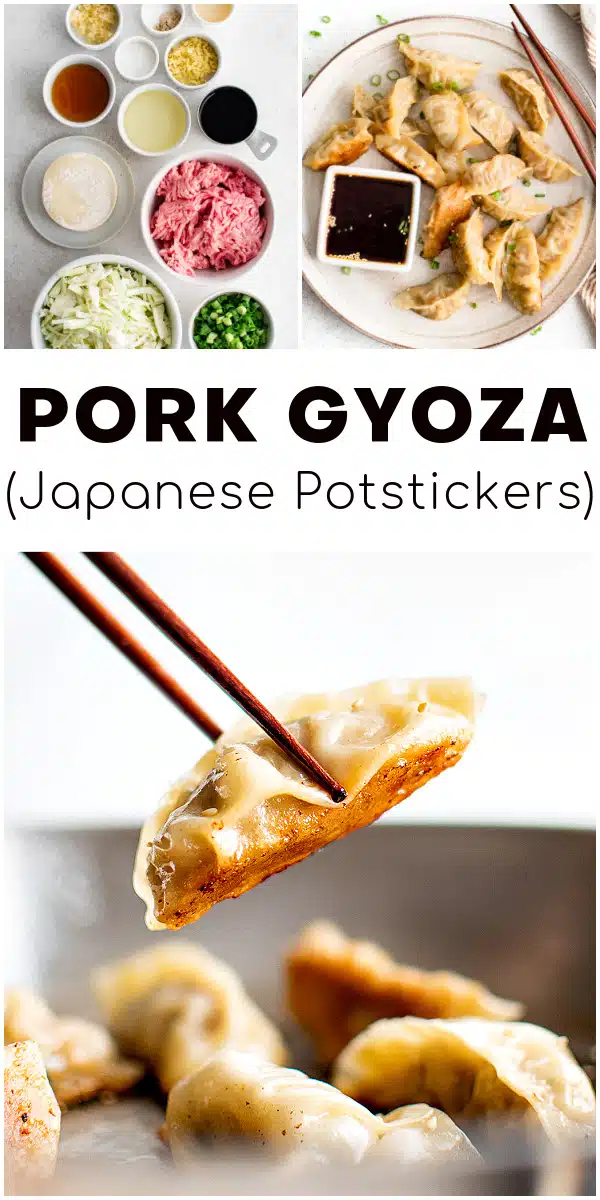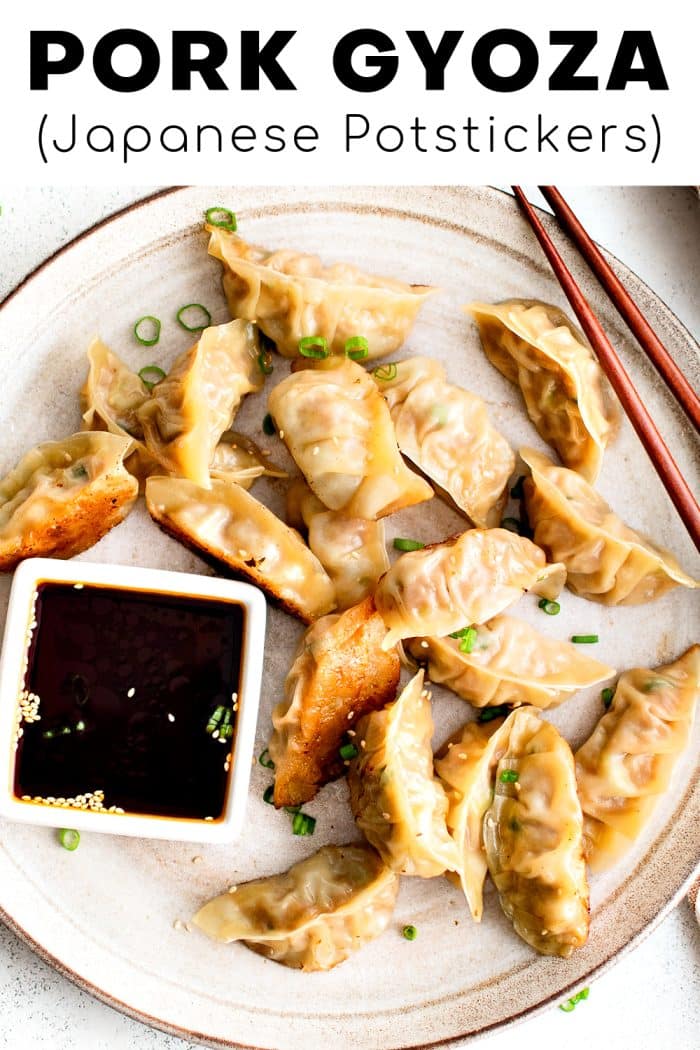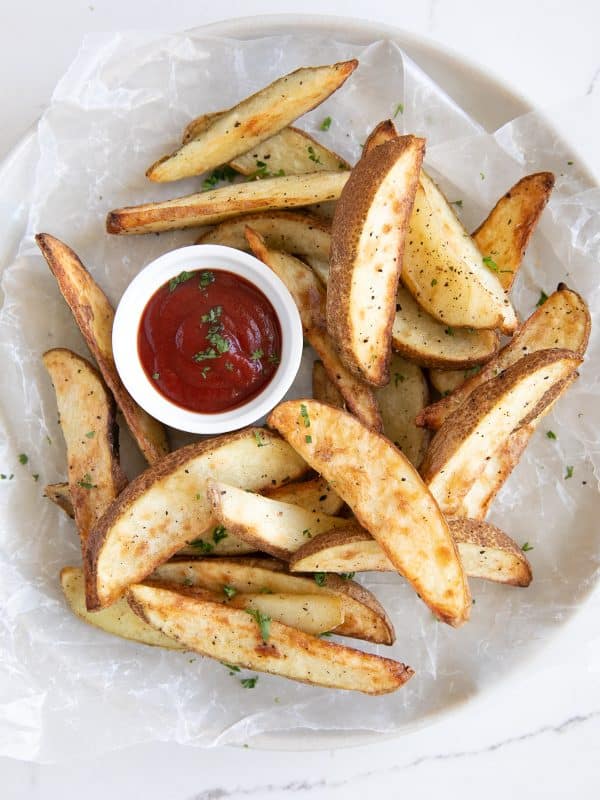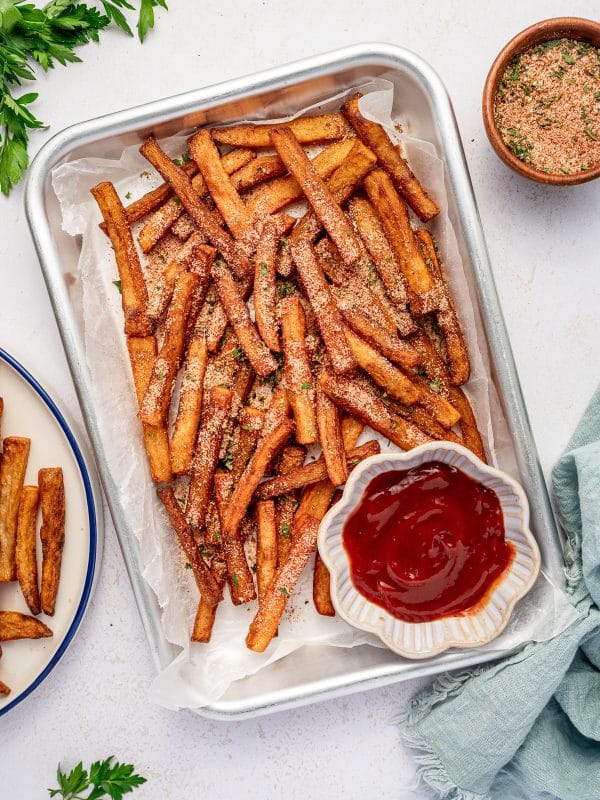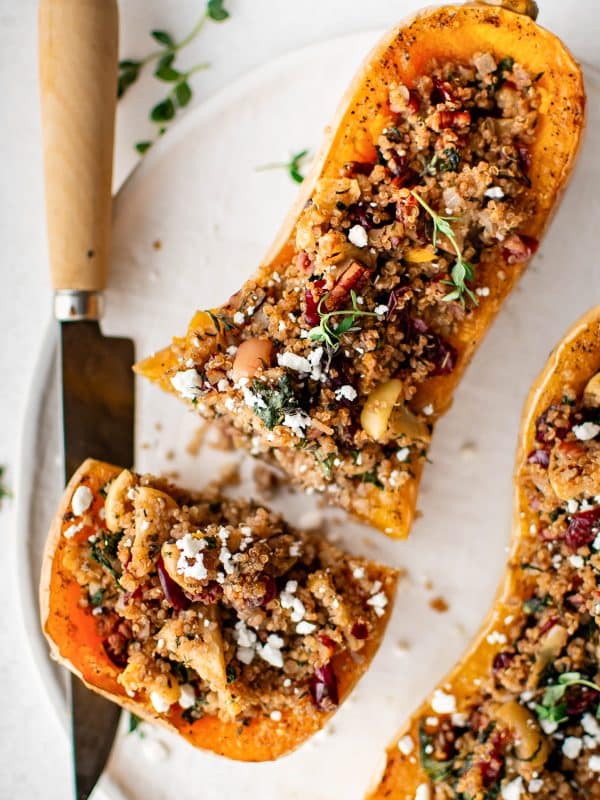This post may contain affiliate links. See my disclosure policy.
How to make the best Gyoza, or Japanese Pan-Fried Potstickers, from scratch like a pro! Juicy, tender, flavorful pork wrapped in pasta-like gyoza wrappers and pan-fried until golden brown and crispy on the outside. Easy to make, enjoy these delightful little pork dumplings as a light dinner or delicious appetizer with homemade gyoza dipping sauce.
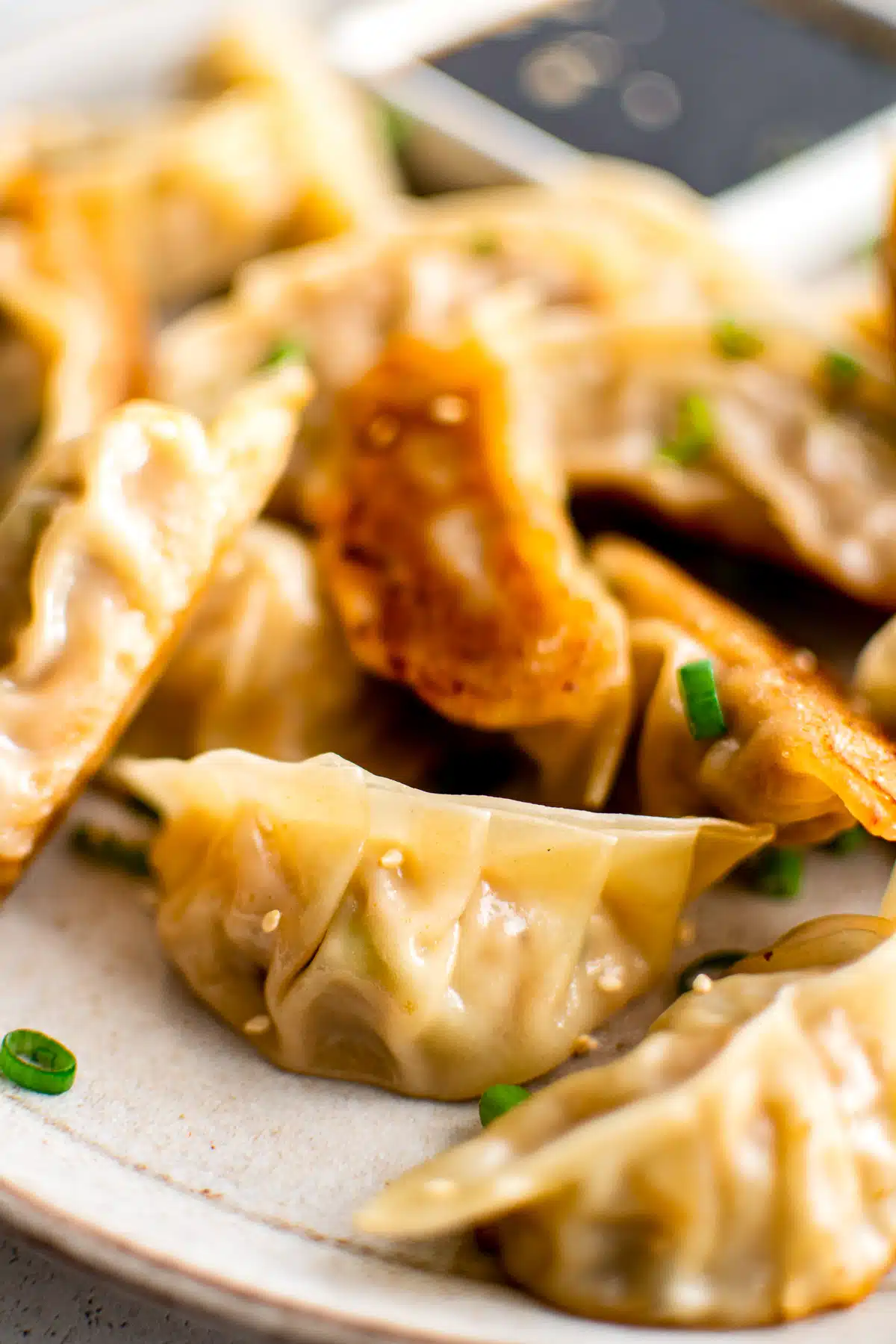
I love gyoza. I love homemade gyoza, frozen gyoza (thank you, Trader Joe’s, for always keeping my freezer well-stocked), and restaurant gyoza. Versatile and so flavorful, these comforting little meat-filled pillows are perfect for breakfast, lunch, dinner, or as a late-night snack.
What is Gyoza?
Gyoza (餃子) are Japanese dumplings that are commonly filled with ground meat and vegetables and wrapped in a thin dough. Inspired by the original Chinese dumplings, jiaozi (餃子), gyoza have been adapted to Japanese taste and are now a staple in Japanese cuisine, sold in ramen shops, grocery stores at festivals, izakayas (Japanese pubs).
The filling of gyoza usually consists of ground pork, cabbage, chives, garlic, and ginger. After the filling is wrapped in the dough, the dumplings are typically pan-fried on one side for a crisp texture, then steamed to ensure the filling is cooked through.
There are different types of gyoza based on different cooking methods, including:
- Yaki Gyoza: These pan-fried dumplings are crispy on the bottom and steamed on the top.
- Sui Gyoza: These are boiled dumplings with a soft and tender texture.
- Age Gyoza: These are deep-fried dumplings that are crispy all over.
Gyoza is often served with a dipping sauce made from soy sauce, vinegar, and chili oil called gyoza sauce.
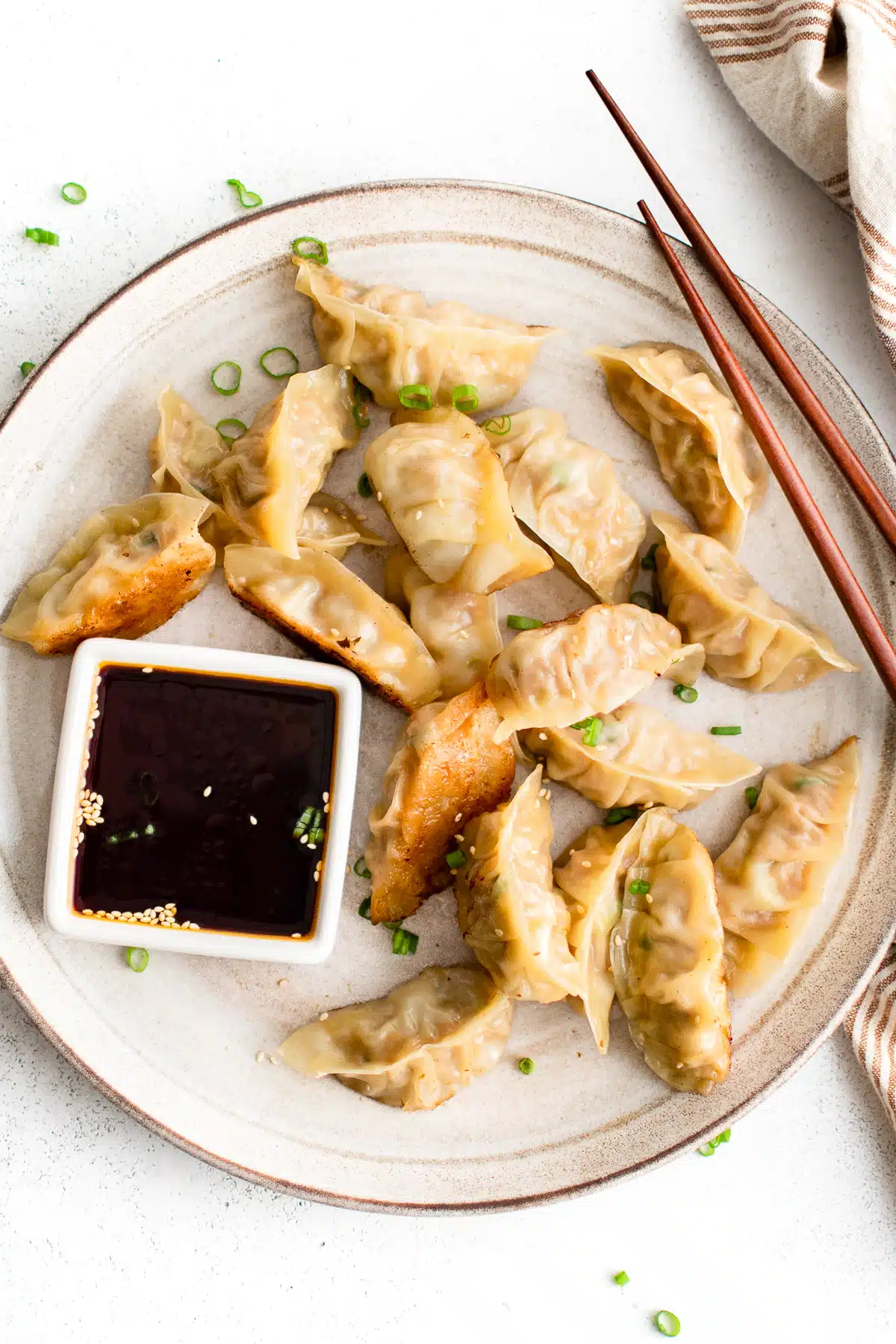
What is in Gyoza?
Gyoza filling typically consists of the following ingredients:
- Ground pork: The most traditional and popular meat used, but you can also use other meats like chicken or beef or even make them vegetarian.
- Cabbage: Finely chopped and sometimes lightly sautéed or blanched before being added to the filling. In this recipe, we’re not sauteing or blanching before adding it to the meat mixture.
- Fresh garlic and chives: For a strong, distinctive flavor. In this recipe, I’ve added green onion instead of chives.
- Ginger: Warming and even a little spicy, ginger is a popular aromatic found in most Asian cuisine.
- Soy sauce, sesame oil, and mirin: These are used to season the filling.
- Sugar: To balance the saltiness.
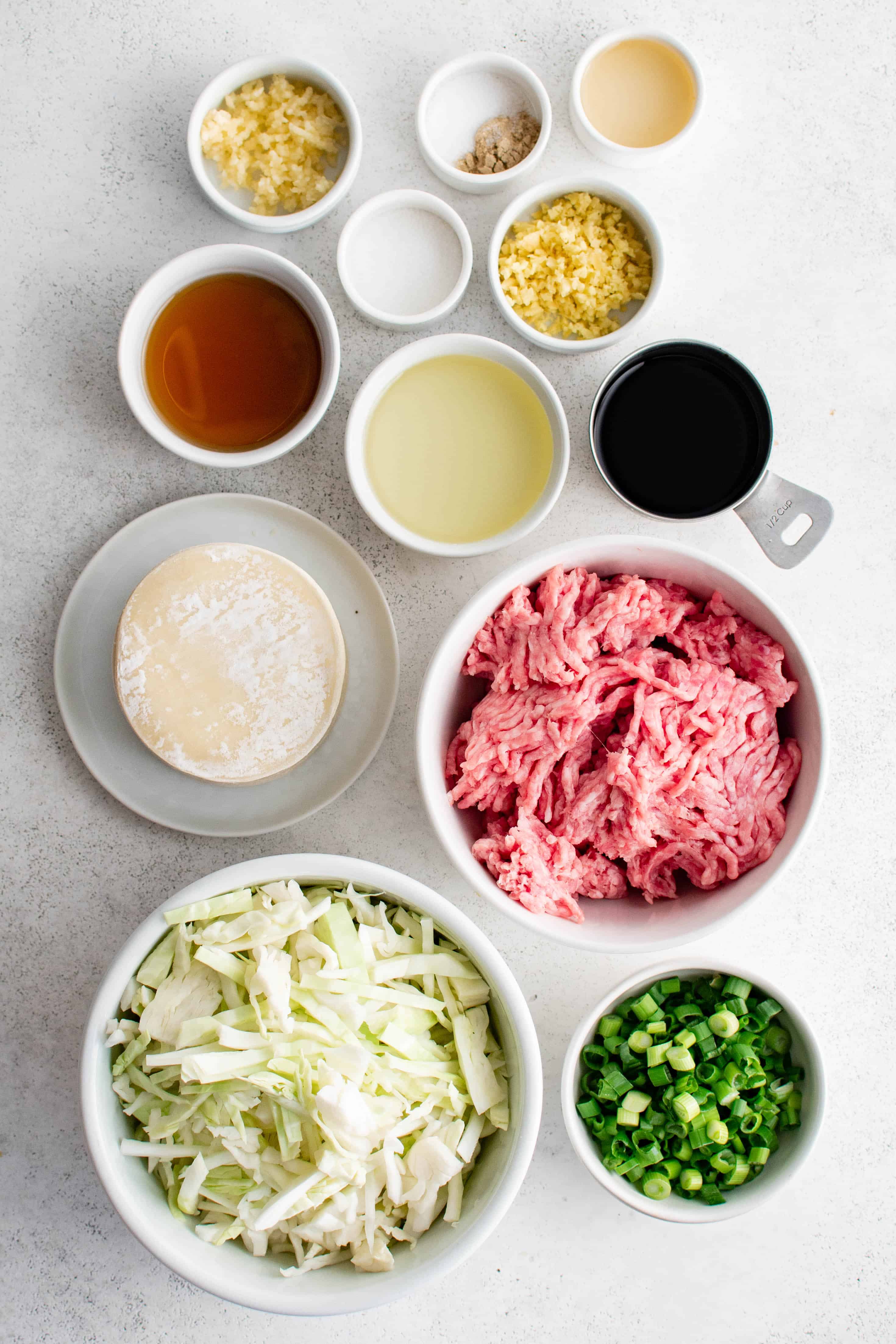
How to Make Gyoza
1. Make the filling: Combine the ground pork, shredded cabbage, green onions, garlic, ginger, soy sauce, sesame oil, mirin, sugar, white pepper, and salt in a large bowl. Mix until combined. Optional: you may lightly sauté or blanch the cabbage before adding it to the filling.
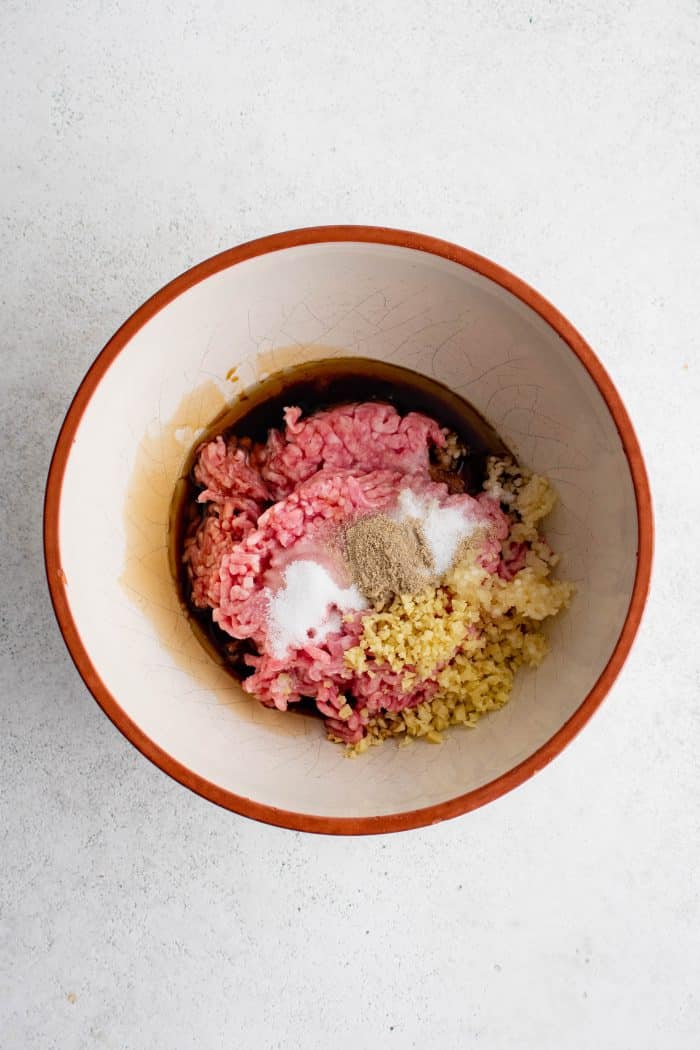
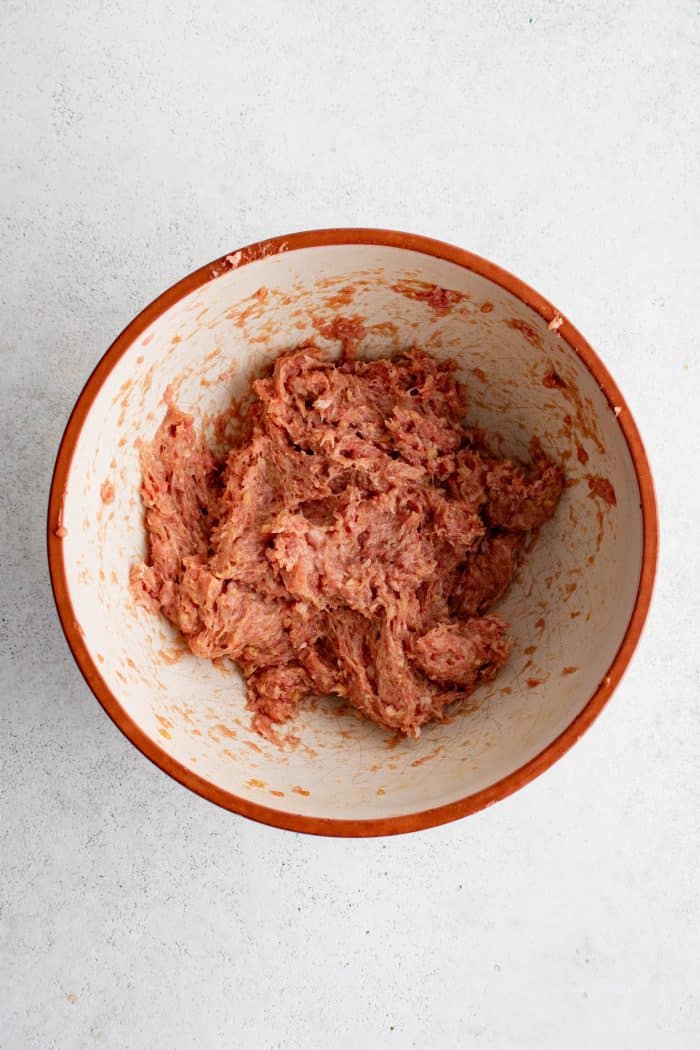
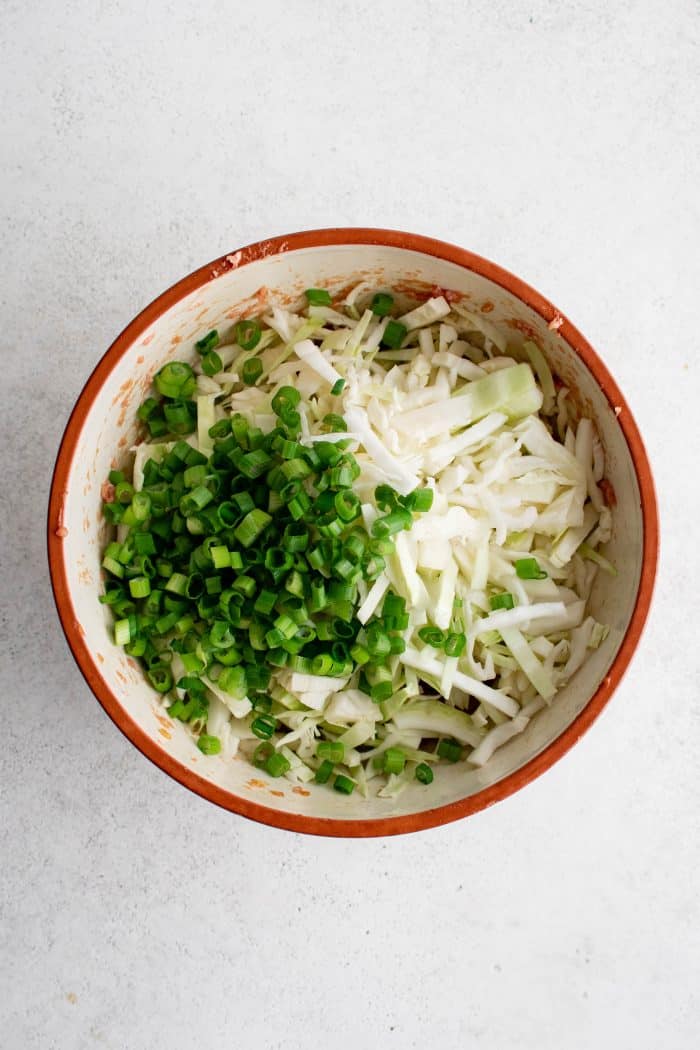
2. Assemble and fold: This is, understandably, the most intimidating part of the whole process. Don’t worry if your potstickers aren’t perfectly wrapped – with a little practice, you’ll be a pro in no time!
To start, lay a gyoza wrapper flat on your palm or on a clean, dry surface. Next, spoon about 1 to 2 teaspoons of filling onto the center of the wrapper. Be careful not to overfill, or it will be difficult to seal and may break during cooking.
Using your fingers, moisten the edge of the wrapper with a little water – this will help it stick together and seal properly. Fold the wrapper in half over the filling, pinching it together in the middle but leaving the ends open.
Pleat the edges. Starting at the center and working toward the outer edges, create small pleats in the top layer of the wrapper, pressing them against the bottom layer to seal the dumpling. This will create a fan or crescent shape. Japanese gyoza typically has pleats only on one side.
Finally, create the final seal by pressing along the edges of the gyoza.
3. Repeat with the remaining wrappers and filling: Then transfer them to a large baking sheet lined with parchment paper until ready to cook.
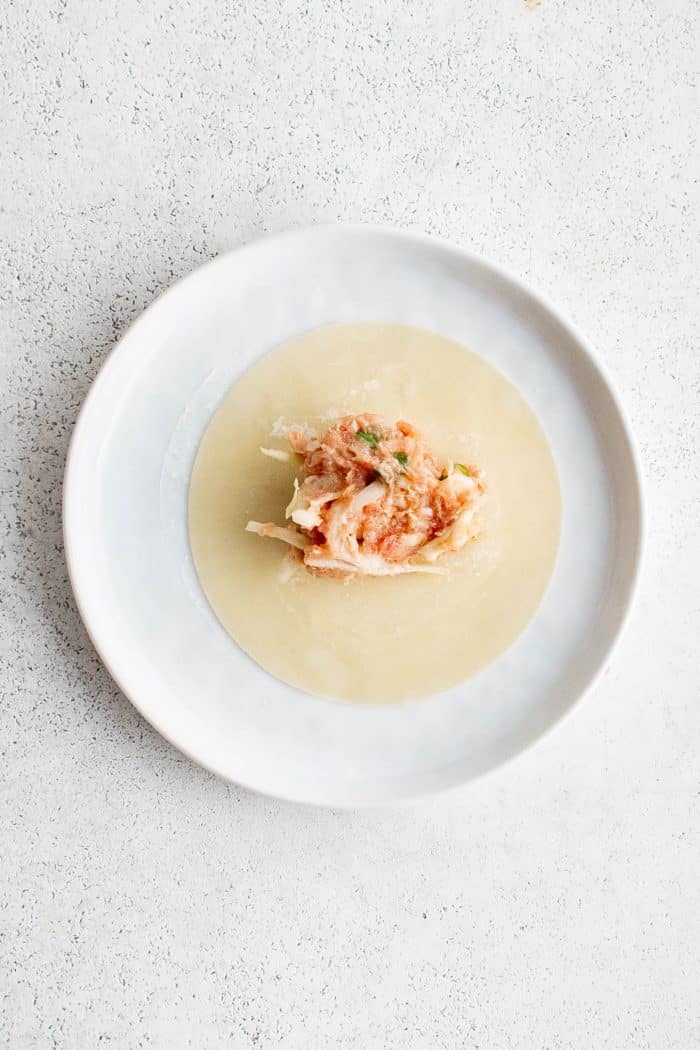
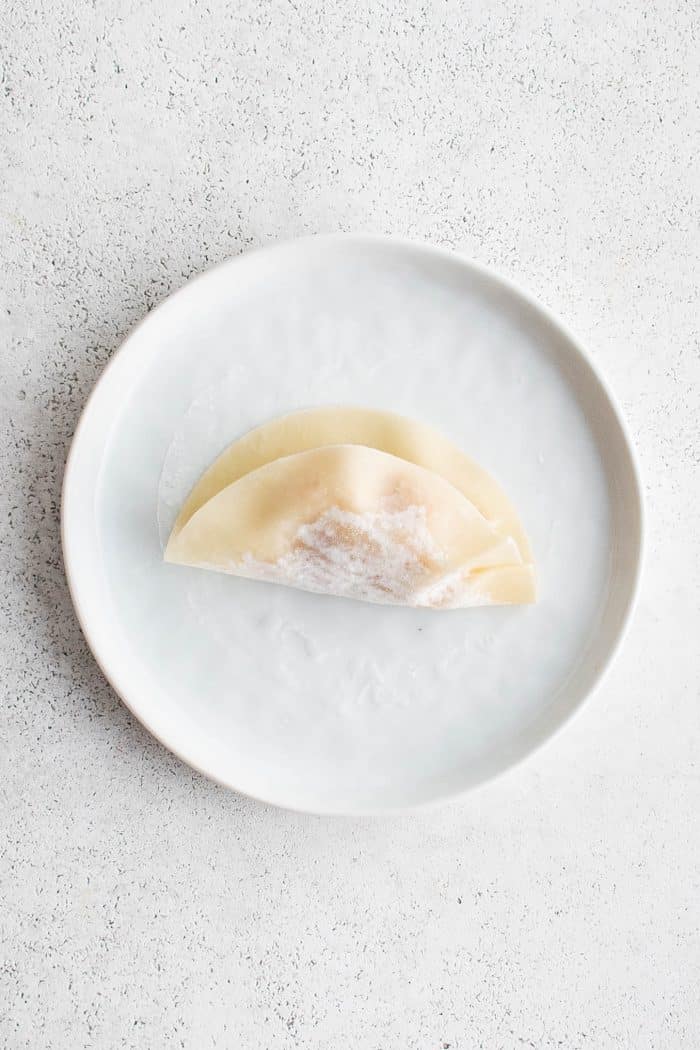
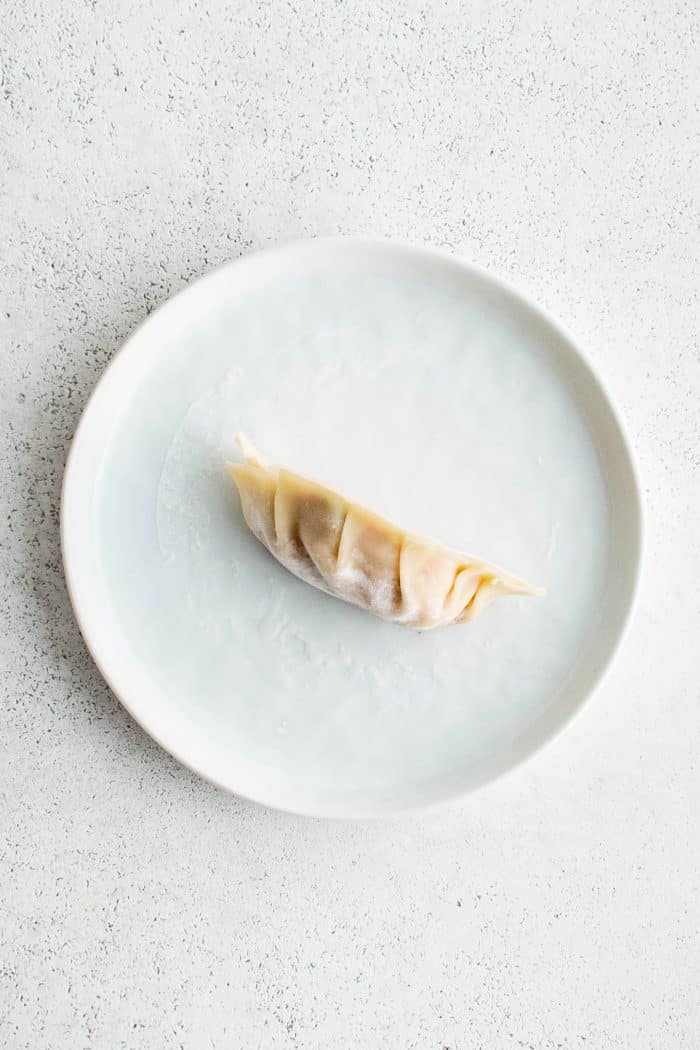
4. Pan-fry the gyoza in batches: Heat a large non-stick frying pan over medium heat and add enough vegetable oil to coat the bottom of the pan. Add 6-7 potstickers to the pan, flat-side-down, and cook for 2-3 minutes or until the bottom turns golden brown.
Add ¼ cup of water to the pan and cover with a lid. Steam for 2-3 minutes or until they are cooked through, and most of the water has evaporated. Remove the lid, allow the remaining water to evaporate, and cook uncovered until they are golden brown and crispy on the bottom.
5. Repeat until all of the potstickers have been pan-fried.
6. Serve with gyoza sauce and garnish with green onions and sesame seeds if desired.
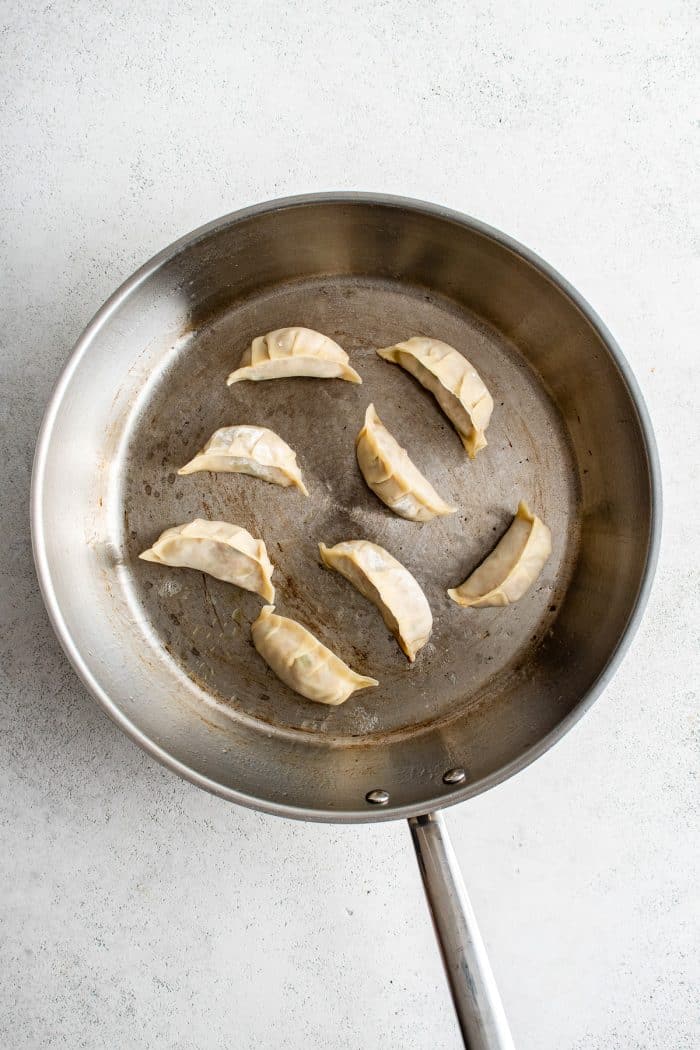
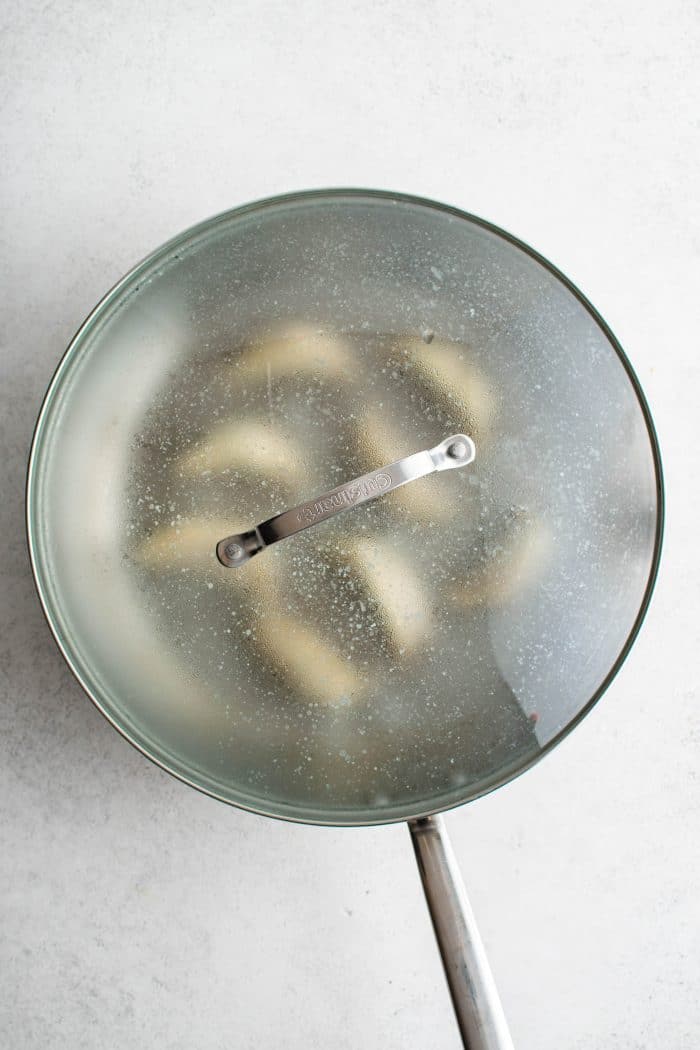
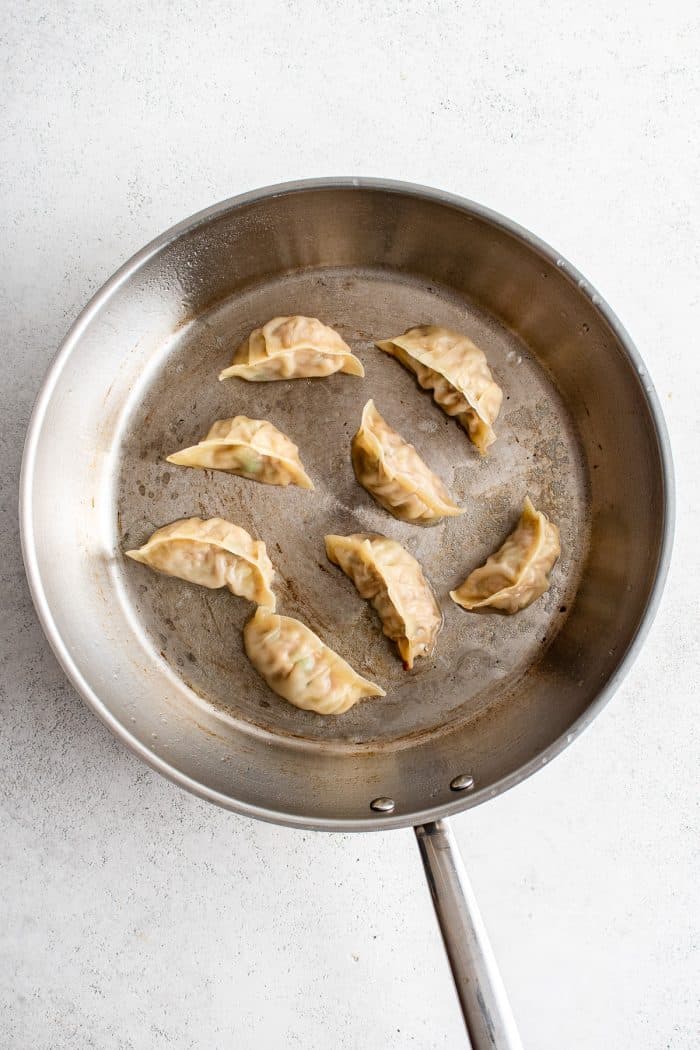
What is the Difference Between Gyoza and Chinese Potstickers?
Japanese gyoza and Chinese potstickers are similar in many ways, but there are a couple of key differences.
For starters, the filling. Chinese potstickers often use a mixture of vegetables and meat, commonly cabbage and pork. Japanese gyoza filling also usually includes ground pork, but it’s often mixed with a variety of finely chopped vegetables like cabbage and green onions and aromatics like fresh garlic and ginger.
Perhaps the most noticeable difference, however, is the wrapper thickness. Gyoza wrappers are typically thinner than those used for potstickers. This results in a lighter, more delicate dumpling.
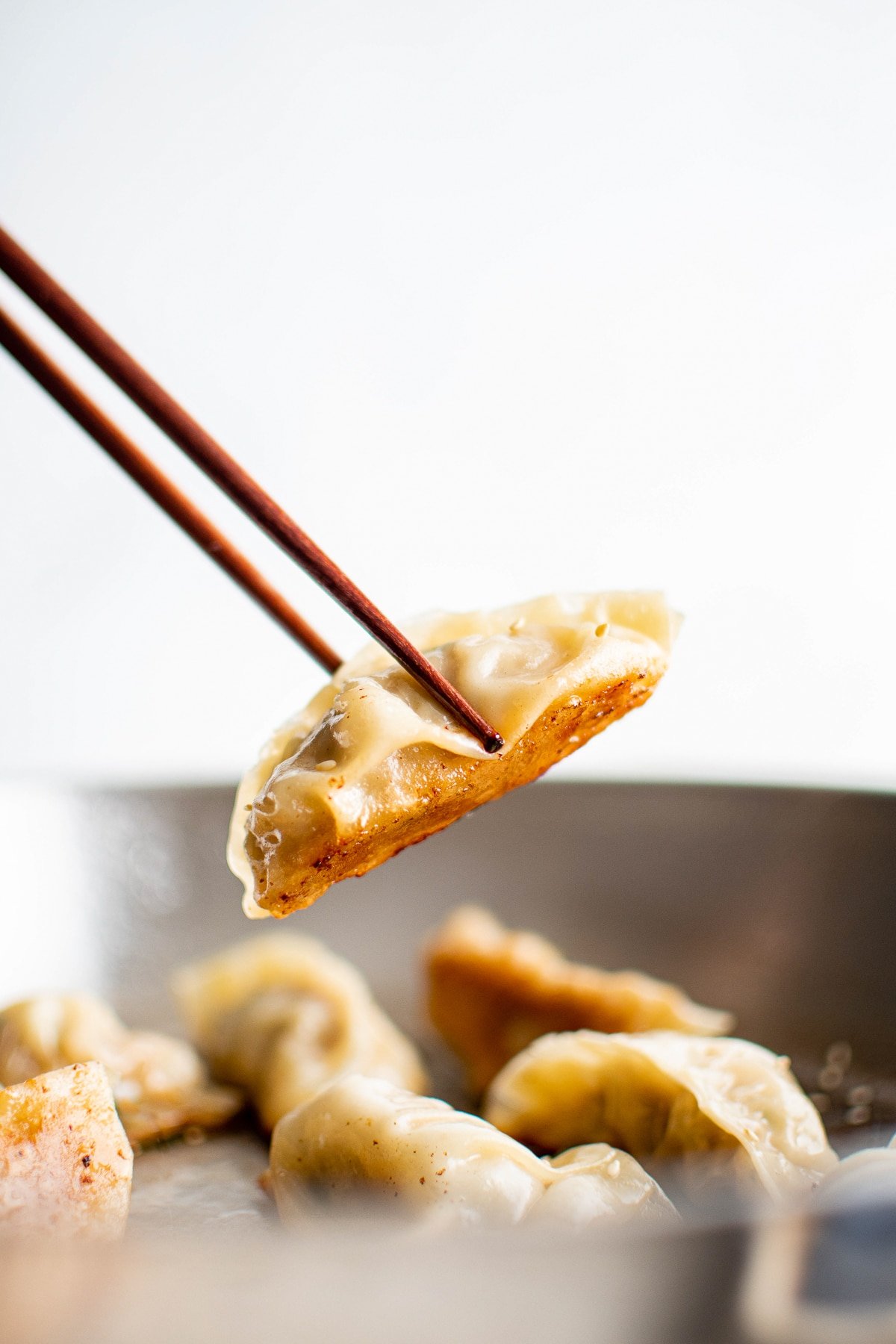
Freezing and Reheating
How to freeze uncooked gyoza: Arrange the uncooked potstickers in a single layer on a baking sheet lined with parchment paper. Make sure they aren’t touching to prevent them from sticking together. Place the baking sheet in the freezer and freeze until they are solid, usually about 2 hours. Once frozen, transfer them to a freezer bag or airtight container. They should remain good in the freezer for up to two months.
To freeze cooked gyoza: Allow the potstickers to cool completely, then follow the steps above.
To cook gyoza from frozen:
- Uncooked frozen gyoza can be cooked straight from the freezer. There’s no need to defrost them first; just add a few minutes to the cooking time.
- Cooked frozen gyoza should be reheated in the microwave or in a covered pan with a bit of water reheated.
More Amazing Japanese Recipes,
- Yakisoba Noodles Recipe
- Miso Ramen
- Chashu Pork
- Chicken Yakitori Recipe
- Easy Edamame Recipe
- Teriyaki Sauce Recipe
If you try making this Homemade Gyoza Recipe, please leave me a comment and let me know! I always love to hear your thoughts.
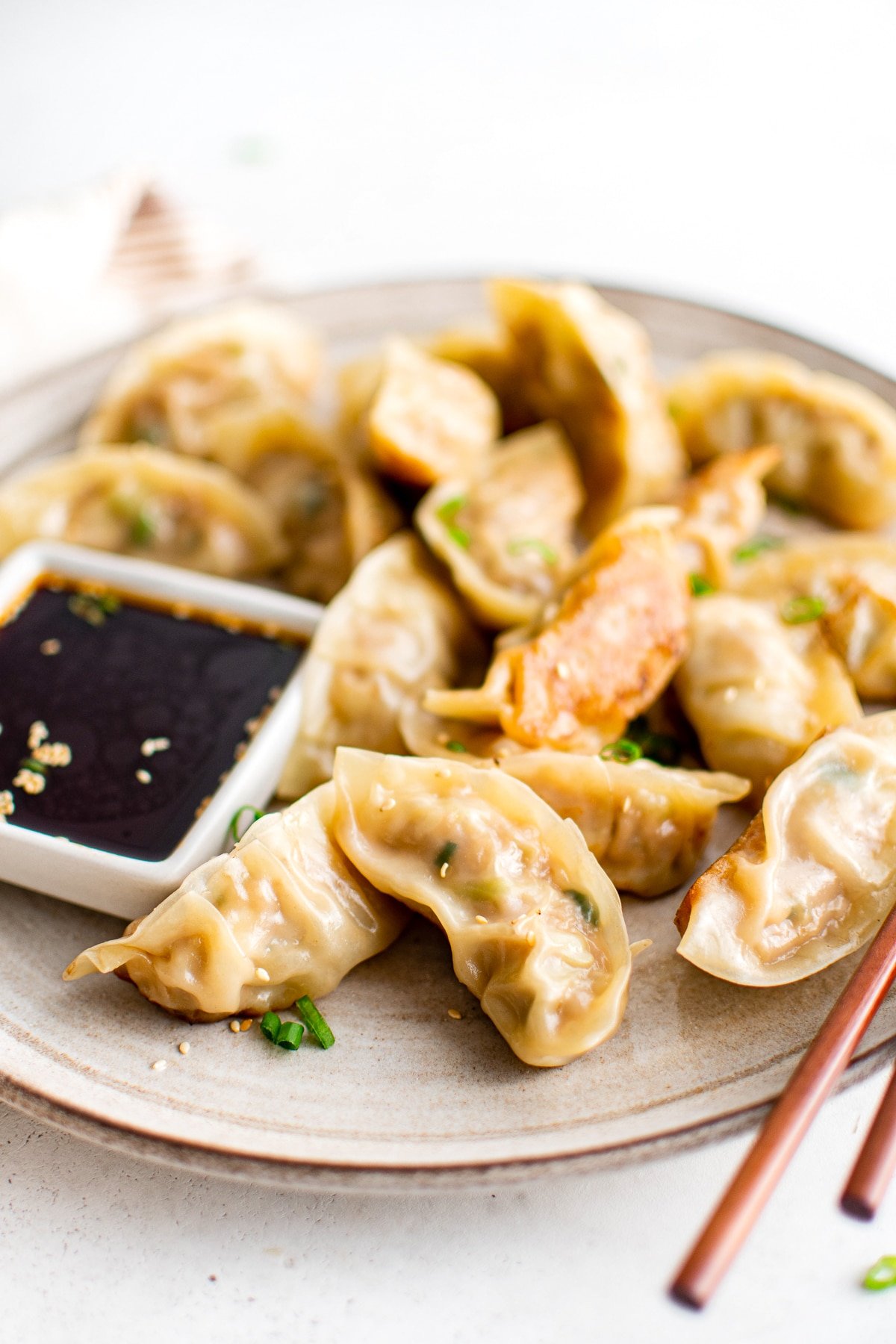
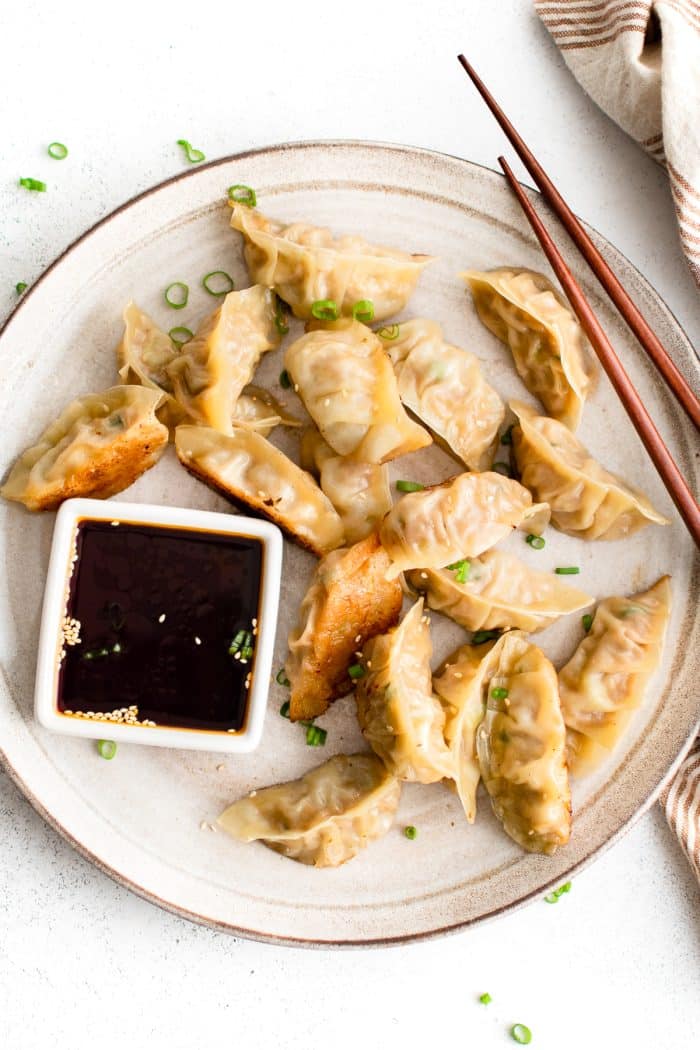
Gyoza Recipe (Japanese Potstickers)
Ingredients
- 1 pound ground pork
- 3 cups napa cabbage, thinly sliced
- 5 green onions, white and green parts sliced
- 3 cloves garlic, minced
- 1 (1-inch) piece fresh ginger, peeled and finely minced
- ¼ cup soy sauce
- 2 tablespoon sesame oil
- 1 tablespoon mirin
- 1 teaspoon granulated sugar
- ½ teaspoon white pepper
- ½ teaspoon salt
- 1 (10-ounce) package gyoza wrappers, or 45 to 50 wrappers total
- vegetable oil for frying
Instructions
- In a large bowl, combine the ground pork, shredded cabbage, green onions, garlic, ginger, soy sauce, sesame oil, mirin, sugar, white pepper, and salt. Mix until combined.
- To assemble each gyoza, lay a wrapper on a plate and place a tablespoon of the meat mixture in the middle, leaving a little bit of space around the edges.
- Wet the edge of the wrapper with a little bit of water, fold the wrapper in half, and press the edges together to seal.
- Using your thumb and forefinger, pinch and fold one end together to create a small pleat, move to the next section of the wrapper, and repeat the pinching and folding process – ensuring you seal the folds well.
- Continue working your way around the wrapper, pinching and folding to create a series of pleats until you reach the other end.
- Repeat with the remaining wrappers and filling. Place them on a plate or baking sheet until you are ready to cook.
- When ready to cook, heat a large non-stick frying pan over medium heat and add enough vegetable oil to coat the bottom of the pan.
- Once the oil is hot, add 6-7 gyoza to the pan, flat-side-down, and cook for 2-3 minutes or until the bottom turns golden brown.
- Add ¼ cup of water to the pan, cover with a lid, and steam for 2-3 minutes or until the gyoza are cooked through and most of the water has evaporated.
- Then, remove the lid to evaporate any remaining water and continue to cook uncovered until they are golden brown and crispy on the bottom.
- Carefully remove them from the pan to a clean plate. Repeat with the remaining gyoza.
- Serve hot with gyoza sauce and garnished with green onions and sesame seeds if desired.
Notes
Nutrition
Nutrition information is automatically calculated, so should only be used as an approximation.
